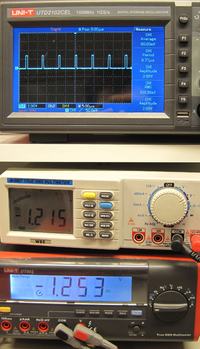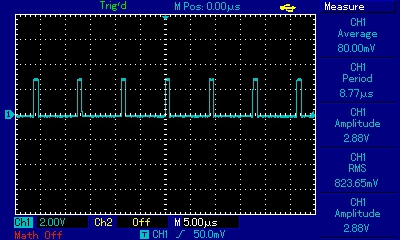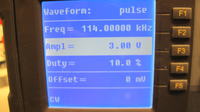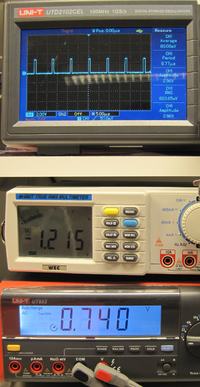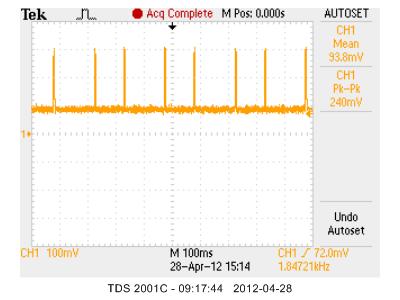Mariwan
Junior Member level 2
Please could any one tell me which one is correct?
I have a pulse as this figure represent power consumption (current required) of an object

the waveform is only positive - no negative part
Now to calculate the effective or the equivalent DC, there are different way to calculate . One is the average and the other is rms.
Using normal multimeter, it calculate the average, while using true rms multimeter it calculate the rms value of the voltage.
Using theoretical method the voltage(rms) = vp * (t1/T)^0.5
the average = vp * t1/T
I used oscilloscope and two different multimeter, each gives a different values .. :shock:
WIKI pedia says that the correct measuremnet is the rms., my teacher says average ..
Note: This kind of waveform could be found in any wireless sender which has a sleep mode. To calculate the power consumes by the device I used a ~7 ohm R in and oscilliscope over the Resistor to capture the wave form.
Which kind of measurement is the correct one, average or rms? why?
Many thanks in advance. :roll:
I have a pulse as this figure represent power consumption (current required) of an object

the waveform is only positive - no negative part
Now to calculate the effective or the equivalent DC, there are different way to calculate . One is the average and the other is rms.
Using normal multimeter, it calculate the average, while using true rms multimeter it calculate the rms value of the voltage.
Using theoretical method the voltage(rms) = vp * (t1/T)^0.5
the average = vp * t1/T
I used oscilloscope and two different multimeter, each gives a different values .. :shock:
WIKI pedia says that the correct measuremnet is the rms., my teacher says average ..
Note: This kind of waveform could be found in any wireless sender which has a sleep mode. To calculate the power consumes by the device I used a ~7 ohm R in and oscilliscope over the Resistor to capture the wave form.
Which kind of measurement is the correct one, average or rms? why?
Many thanks in advance. :roll:
